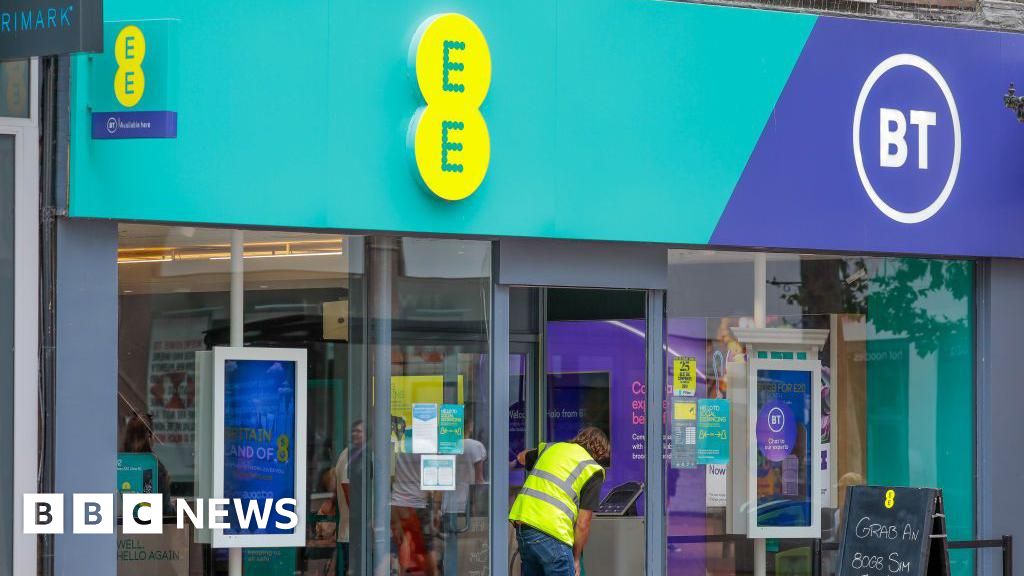Mastering Cold Email Outreach: A Step-by-Step Guide

Excelling in cold email outreach requires a strategic approach that combines research, personalization, and effective communication. To begin, you need to understand your target audience and their specific challenges. This sets the foundation for crafting customized messages that resonate. Next, you’ll learn how to build a high-quality email list and create concise, engaging emails. As you progress, you’ll discover the importance of follow-ups and performance analysis, vital for refining your outreach strategy. What comes next is critical for your success.
Key Takeaways

- Understand your target audience by analyzing demographics and pain points to tailor your messaging effectively.
- Craft compelling cold emails that include a personalized introduction, specific pain points, and a clear call-to-action.
- Implement a follow-up strategy, sending 2-3 emails spaced 3-7 days apart to increase response rates.
- Utilize A/B testing to refine your email content, subject lines, and strategies for optimal engagement and conversion.
- Leverage tools like Mailshake and Google Analytics to automate outreach, track performance, and analyze campaign metrics for continuous improvement.
What Is Cold Emailing?

Cold emailing is a strategic outreach method that involves sending unsolicited emails to potential contacts with whom you have no prior interaction.
It’s essential for cold outreach as it targets individuals directly, aiming to initiate valuable conversations. Unlike cold email marketing, which typically addresses subscribers, cold emails focus on personalization and relevance to the recipient’s needs.
For successful cold email lead generation, you need a clear value proposition, an engaging subject line, and a compelling call-to-action. Effective cold email examples highlight these elements, achieving an average response rate of 8.5%.
Benefits of Cold Email Outreach

Effective outreach can greatly benefit your business, particularly when utilizing cold email strategies. Cold email outreach is a cost-effective method to connect with potential clients, allowing you to reach a wider audience without considerable financial investment.
Personalized cold emails can yield response rates up to 50% higher than generic messages, enhancing engagement. By implementing effective strategies, you can achieve conversion rates between 0.7% and 4.2%, tapping into previously unreachable prospects.
Consistent follow-ups are essential, as they account for approximately 70% of email-generated meetings. To maximize your results, consider using tips for cold emailing and review the best cold email examples.
If you’re a cold email lead generation agency, these practices can greatly expand your network and client base.
Understanding Your Target Audience

Comprehending your target audience is crucial for crafting compelling cold emails that resonate and drive engagement. By analyzing demographics, job titles, and industry-specific pain points, you can tailor your messaging effectively. Here’s a table illustrating key factors to take into account:
| Factor | Importance | Actionable Insight |
|---|---|---|
| Demographics | Identify who they are | Tailor tone and content accordingly |
| Job Titles | Understand their roles | Address relevant responsibilities |
| Pain Points | Recognize challenges faced | Offer solutions in your messaging |
| Recent Accomplishments | Highlight their interests | Personalize outreach for relevance |
Utilizing email list segmentation and conducting thorough audience research improves your cold email strategy, ensuring your communication is not just effective but also engaging.
Building a High-Quality Email List

Building a high-quality email list starts with a clear comprehension of your target audience, which you’ve already begun to establish.
Next, leverage social media platforms like LinkedIn and Twitter to engage potential customers, participating in discussions and sharing valuable content. This approach helps you gather valuable leads.
Segment your list based on criteria such as job title or industry, allowing you to personalize your messaging effectively.
Regularly maintain and update your email list, removing invalid contacts to improve deliverability.
Consider using email outreach software and cold email lead gen agency services to automate lead sourcing and qualifying.
Crafting the Perfect Cold Email

Crafting the perfect cold email requires careful attention to detail, as each element plays a crucial role in engaging your recipient.
Start by using a strong cold email template that emphasizes personalization. A good cold email format includes a brief introduction acknowledging the recipient’s achievements, followed by a customized pitch addressing their specific pain points. This approach can transform your outreach into the best cold email possible.
Confirm your email length is ideal, ideally between 50-125 words, to maintain interest. Finally, conclude with a clear call-to-action that guides the recipient on the next steps.
Writing Compelling Subject Lines

Effective subject lines can greatly impact the success of your cold email outreach. Aim for concise phrases between 6-10 words, ensuring clarity during grabbing attention.
Personalizing subject lines with the recipient’s name or mentioning their recent accomplishments can increase open rates by up to 50%.
Consider using curiosity-driven language or thought-provoking questions to engage your audience. Highlighting specific benefits or value propositions can improve open rates by around 20%.
A/B testing different subject lines is essential; it helps you identify which resonates best with your target audience.
Utilize cold email generators and cold email outreach software to streamline this process, and refer to great cold email templates for inspiration on how to write a cold email effectively.
Personalization Techniques for Cold Emails

Personalization techniques are essential for making your cold emails stand out and engaging your recipients effectively. By incorporating elements like the recipient’s name, company, or recent achievements, you improve relevance in your outreach. Craft personalized subject lines that reflect their interests to increase open rates. Here’s a quick reference table to guide you:
| Technique | Description | Benefits |
|---|---|---|
| Use Their Name | Address the recipient directly. | Increases personal connection. |
| Mention Recent Accomplishments | Highlight achievements relevant to them. | Shows genuine interest. |
| Customized Pain Points | Discuss challenges they face and solutions you offer. | Improves message relevance. |
| Personalize Content | Use insights from LinkedIn profiles or company news. | Builds rapport. |
| Customized Calls-to-Action | Create CTAs that resonate with their goals. | Enhances engagement. |
Utilizing these personalization strategies in cold email outreach can greatly boost response rates, especially when combined with cold email marketing software and automation tools.
Best Practices for Follow-Up Emails

When you send follow-up emails, timing is key, so aim for 2-3 days after your initial outreach.
Crafting compelling messages that add value, like relevant case studies or helpful resources, can greatly increase your chances of getting a response.
Furthermore, personalizing your follow-ups based on your previous interactions can make your emails stand out and resonate more with the recipient.
Timing Your Follow-Ups
How can you guarantee your follow-up emails stand out and achieve the desired response? Timing your follow-ups is crucial in cold email outreach. Research shows that sending emails on Tuesdays and Thursdays around 10 AM yields higher open rates.
Design a follow-up sequence of 2-3 emails, as 70% of sales reps stop after the first email, missing potential engagement. Space your follow-ups 3-7 days apart to avoid overwhelming recipients during keeping your message visible.
Furthermore, utilize insights from previous interactions to add personalized touches that resonate with your recipient. Consider cold email automation to streamline your process, ensuring consistent communication during maintaining the personal connection that can drive positive responses.
Crafting Compelling Messages
Crafting compelling follow-up emails requires a strategic approach that respects the recipient’s time in addition to delivering value. Keep your message concise, ideally between 50-125 words. Aim for 2-3 follow-ups, each providing additional insights, such as relevant case studies. Personalization is key; reference your original message and include any new, pertinent information. Send your follow-ups 3-7 days post-initial outreach to keep the conversation fresh.
Here’s a simple table to guide your approach:
| Best Practices | Tips | Tools |
|---|---|---|
| Conciseness | Stick to 50-125 words | Good cold email templates |
| Value Addition | Share relevant case studies | Cold email automation tool |
| Timing | Send 3-7 days after initial outreach | AI cold outreach |
Personalization Techniques Explained
What steps can you take to personalize your follow-up emails effectively?
Personalization is key in cold email outreach. Here are three techniques to improve your follow-ups:
- Reference specific details from your initial email, like the recipient’s challenges, to show genuine interest.
- Include relevant case studies or success stories to provide additional value and demonstrate your offering’s impact.
- Maintain a friendly yet professional tone to cultivate a connection with the recipient.
Timing is essential; send follow-ups within a week to keep the conversation fresh.
A/B test different approaches with your cold contact email sample, analyzing which variations lead to great cold emails.
Using a reliable cold email outreach platform will streamline your efforts, optimizing engagement and response rates.
Tools and Software for Cold Emailing

Choosing the right tools and software for cold emailing is vital for maximizing your outreach efforts. Utilizing effective cold email software can streamline your campaigns greatly. Here’s a quick comparison of some top tools:
| Tool | Features | Best For |
|---|---|---|
| Mailshake | Cold outreach automation | Personalized campaigns |
| Woodpecker | Team collaboration and tracking | Agencies with multiple users |
| Reply | A/B testing and performance metrics | Optimizing messaging strategies |
| NeverBounce | Email verification | Improving deliverability |
| Google Analytics | Campaign analytics | Measuring traffic and conversions |
Investing in these tools, including Hunter, and analytics platforms, helps guarantee you’re using the best cold email outreach software for your needs.
Analyzing and Optimizing Your Cold Email Campaigns

To optimize your cold email campaigns, you’ll want to track key metrics like open rates and response rates.
Implementing A/B testing can help you identify which subject lines and content resonate best with your audience.
Tracking Key Metrics
Tracking key metrics in your cold email campaigns is crucial for comprehending their effectiveness and identifying improvement opportunities. By leveraging cold email tools, you can gain valuable insights into how your emails are performing.
Focus on these key metrics:
- Open rates to gauge subject line effectiveness
- Click-through rates to measure engagement with your content
- Response rates to evaluate overall interest
Using email tracking software or cold email automation software can help automate this process, providing real-time data to inform your decisions.
Aim for an open rate of 20-30%, and keep in mind that engaging follow-ups can lead to a significant increase in meetings.
A/B Testing Strategies
Analyzing the performance of your cold email campaigns through A/B testing can greatly improve your outreach efforts.
By comparing two variations of an email, like subject lines or calls-to-action, you can see which version yields better results. Use a reliable cold email service or cold email app for this process, as these tools often include A/B testing features.
Focus on metrics such as open rates and click-through rates to gauge performance. Remember, test only one variable at a time to pinpoint what works.
Regular A/B testing can lead to significant improvements, as personalized emails often generate 50% higher open rates. Adopting these strategies will help you refine your approach using the best cold email marketing software available.
Analyzing Response Rates
Comprehending response rates is crucial for optimizing your cold email campaigns, as this metric directly reflects the effectiveness of your outreach efforts.
To improve your approach, focus on these key strategies:
- Use personalized cold emails, as they yield a 50% higher open rate compared to generic messages.
- Implement A/B testing different subject lines, which allows you to track what resonates best with your audience.
- Develop engaging follow-up sequences, since about 70% of sales reps stop pursuing leads after the first email.
Frequently Asked Questions
What Is the 30 30 50 Rule for Cold Emails?
The 30 30 50 rule for cold emails suggests structuring your message to improve engagement.
You should dedicate 30% to introducing yourself and building rapport, another 30% to presenting your value proposition or solution, and the final 50% to prompting a specific action, like scheduling a meeting.
This balance helps keep your email clear and focused, ensuring the recipient understands your purpose without feeling overwhelmed by excessive information.
How to Structure a Cold Outreach Email?
To structure a cold outreach email, start with a compelling subject line that grabs attention.
Personalize the introduction by using the recipient’s name and mentioning something relevant about them.
Clearly present your value proposition, focusing on how your offering solves a specific problem.
Keep your email concise, ideally between 50-125 words.
Finally, include a direct call-to-action that guides the recipient on what to do next, ensuring it’s easy to follow.
How to Master Cold Email?
To master cold email, start by personalizing your message to address the recipient’s specific needs.
Keep your emails concise, ideally under 125 words, and include a clear call-to-action.
Craft compelling subject lines that encourage opens.
Implement a systematic follow-up strategy, as many prospects require multiple touches before responding.
Regularly A/B test different elements to improve your emails.
Finally, guarantee compliance with legal requirements to maintain a positive sender reputation.
Does Cold Email Still Work in 2025?
Yes, cold email still works in 2025. It effectively initiates conversations with potential clients or partners, focusing on personalized and relevant content.
You should keep your messages concise, ideally under 150 words, and include a clear call-to-action.
Remember, cold emailing differs from email marketing; it targets individuals without prior connections.
Conclusion
Mastering cold email outreach isn’t just about sending messages; it’s about strategy and execution. By comprehending your target audience, building a quality email list, and crafting personalized emails, you increase your chances of success. Implement best practices for follow-ups and utilize the right tools to track your performance. Continuously analyze your campaigns to refine your approach. With consistent effort and attention to detail, you can improve your outreach and achieve better engagement and conversion rates.
Image Via Envato
This article, "Mastering Cold Email Outreach: A Step-by-Step Guide" was first published on Small Business Trends
What's Your Reaction?
 Like
0
Like
0
 Dislike
0
Dislike
0
 Love
0
Love
0
 Funny
0
Funny
0
 Angry
0
Angry
0
 Sad
0
Sad
0
 Wow
0
Wow
0






























































































